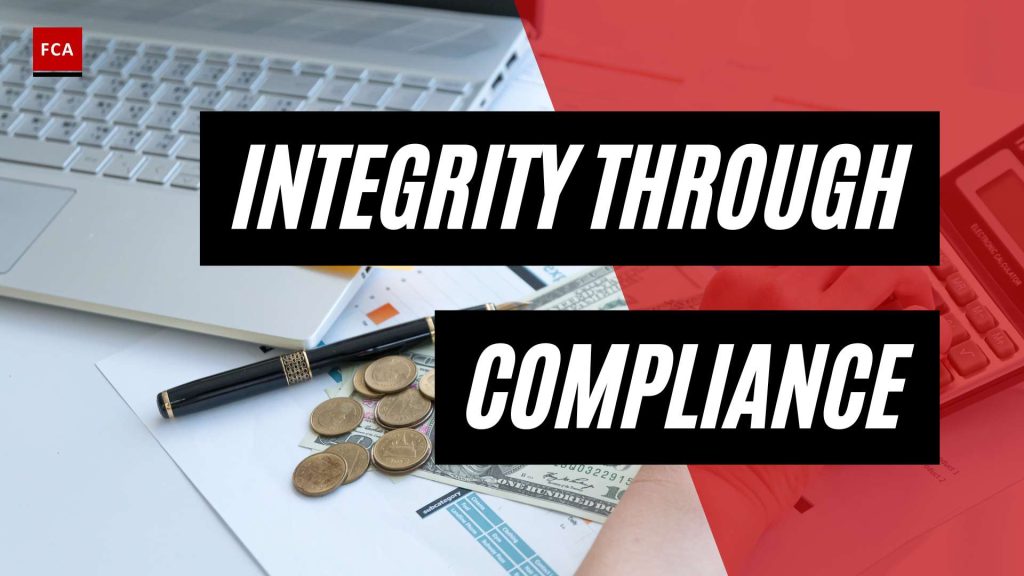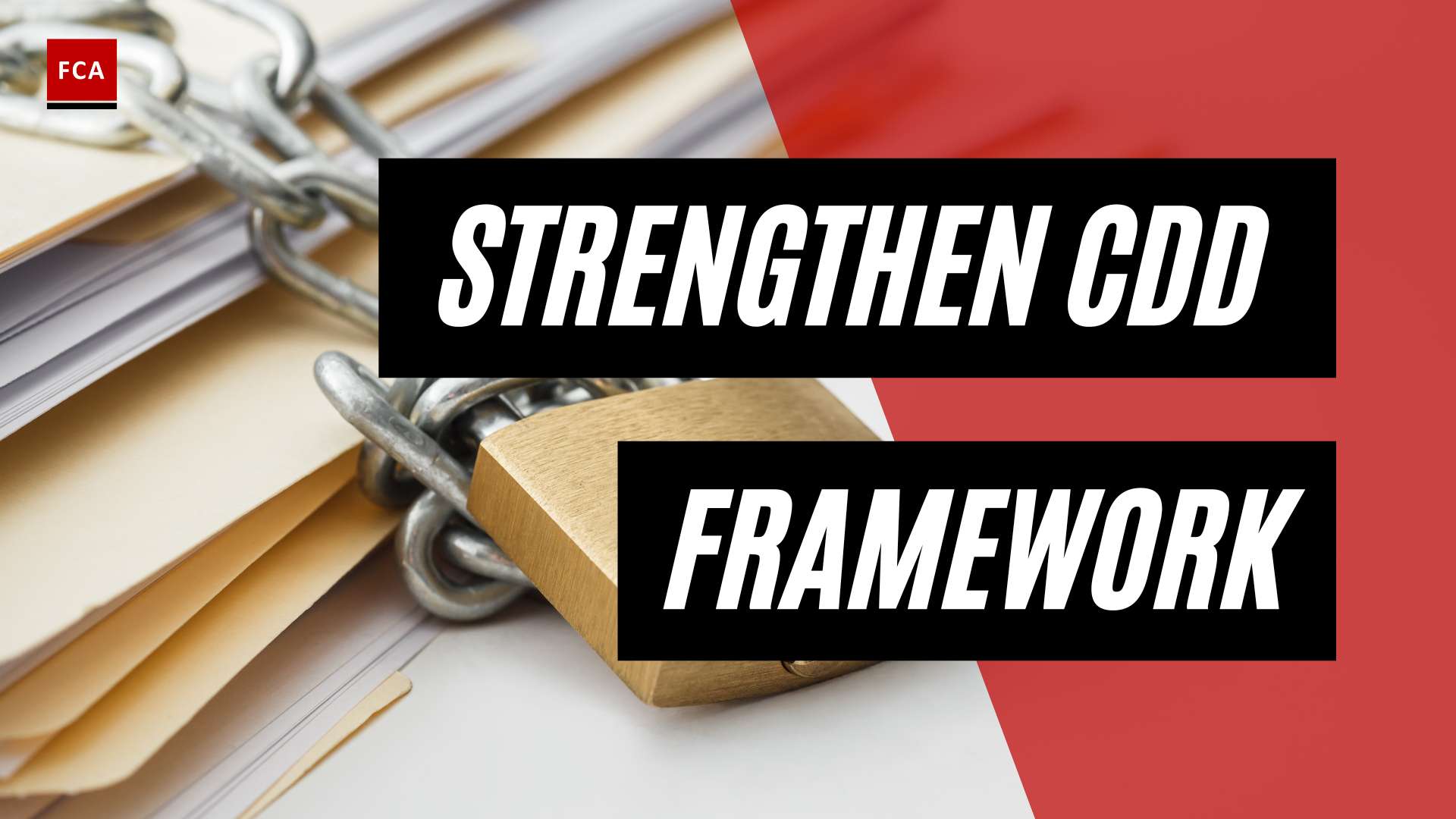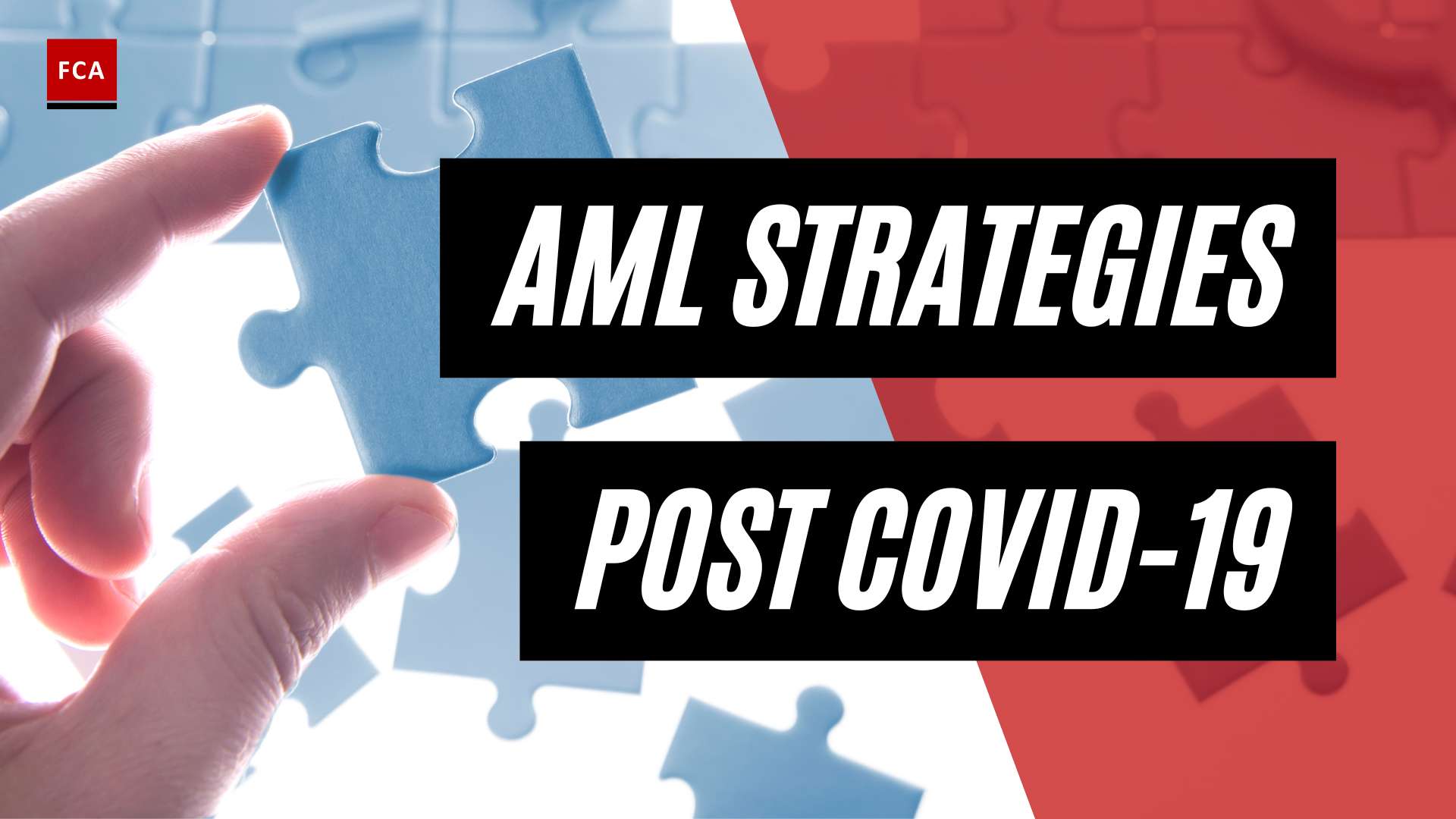Understanding AML Compliance
To maintain financial integrity and combat the illicit flow of money, organizations are required to adhere to Anti-Money Laundering (AML) regulations. This section provides an overview of AML compliance, including its definition, significance, and an introduction to an AML compliance checklist.
What is Anti-Money Laundering (AML)?
Anti-Money Laundering (AML) refers to the set of laws, regulations, and procedures designed to prevent the illegal generation and use of funds through money laundering. Money laundering involves disguising the origins of illegally obtained funds and making them appear legitimate.
AML regulations aim to detect and deter money laundering activities by implementing robust controls and processes within financial institutions, businesses, and other regulated entities. By doing so, AML measures help safeguard the integrity of the financial system and protect against various financial crimes, such as terrorism financing, fraud, and corruption.
The Importance of AML Compliance
AML compliance is of utmost importance for both financial institutions and non-financial businesses. By complying with AML regulations, organizations contribute to the global efforts to combat money laundering and the financing of illegal activities. Failure to comply with AML requirements can result in severe consequences, including reputational damage, legal penalties, and financial loss. It is essential to establish and maintain an effective AML program to ensure compliance and protect against potential risks.
AML Compliance Checklist: An Overview
To facilitate AML compliance, organizations often refer to an AML compliance checklist. This checklist serves as a comprehensive guide to ensure that all necessary AML measures are in place. While specific requirements may vary depending on jurisdiction and industry, an AML compliance checklist typically includes the following key components:
-
Customer Due Diligence (CDD): Conducting thorough due diligence on customers to verify their identities, assess their risks, and understand the nature of their transactions. This includes implementing Know Your Customer (KYC) procedures and, in some cases, applying Enhanced Due Diligence (EDD) for high-risk customers.
-
Transaction Monitoring and Reporting: Establishing effective systems and processes to monitor transactions for suspicious activity. This involves filing Suspicious Activity Reports (SAR) and complying with Currency Transaction Reporting (CTR) requirements. Organizations may utilize monitoring and reporting tools and technology to enhance the efficiency and accuracy of these processes.
-
AML Policies and Procedures: Developing and implementing comprehensive AML policies and procedures tailored to the organization’s risk profile and regulatory obligations. This includes providing ongoing training and education to employees on AML awareness and compliance responsibilities.
-
Internal Controls and Audits: Establishing internal controls to ensure the effectiveness of AML measures and conducting periodic audits to assess the organization’s compliance with AML regulations.
-
Regulatory Compliance and Enforcement: Staying up to date with regulatory changes and requirements, maintaining a strong relationship with regulatory agencies and authorities, and continuously adapting AML programs to align with evolving regulations.
By following the AML compliance checklist and implementing these essential components, organizations can enhance their ability to detect and prevent money laundering activities, mitigate risks, and maintain financial integrity.
In the upcoming sections, we will explore each component of the AML compliance checklist in detail, providing valuable insights into how organizations can implement effective AML measures.
Customer Due Diligence (CDD)
As a crucial aspect of Anti-Money Laundering (AML) compliance, customer due diligence (CDD) plays a vital role in preventing money laundering and terrorist financing. It involves a series of procedures and ongoing monitoring to ensure that businesses have a clear understanding of their customers and the potential risks they may pose. Let’s explore the key components of CDD: Know Your Customer (KYC) procedures, Enhanced Due Diligence (EDD), and ongoing monitoring and risk assessment.
Know Your Customer (KYC) Procedures
KYC procedures are the foundation of CDD. They involve verifying the identity of customers and assessing their potential risks. By implementing robust KYC procedures, financial institutions and other regulated entities can obtain essential information about their customers, such as their identity, occupation, and source of funds. This information helps identify and verify the customer’s identity, ensuring they are not involved in any illicit activities.
KYC procedures typically include collecting identification documents, verifying the authenticity of the provided information, and conducting risk assessments based on factors such as the customer’s profile, business activities, and jurisdiction. These procedures enable businesses to understand their customers better, establish a risk profile, and tailor their AML measures accordingly.
Enhanced Due Diligence (EDD)
While KYC procedures apply to all customers, Enhanced Due Diligence (EDD) is necessary for higher-risk customers or transactions. EDD involves conducting more extensive investigations and gathering additional information to better evaluate and mitigate potential risks. This includes gathering information about the customer’s background, business activities, and sources of wealth.
EDD may be required for customers with complex ownership structures, politically exposed persons (PEPs), high-risk jurisdictions, or transactions that are unusual or have no apparent economic or legal purpose. By implementing EDD measures, businesses can gain deeper insights into the nature of the customer’s transactions, detect any suspicious activity, and mitigate the risk of money laundering or terrorist financing.
Ongoing Monitoring and Risk Assessment
CDD is not a one-time process; it requires ongoing monitoring and risk assessment. This involves continuously reviewing and updating customer information, as well as monitoring their transactions for any suspicious or unusual activities. Ongoing monitoring ensures that businesses remain aware of changes in customer behavior and can promptly detect and report any suspicious transactions.
Risk assessment is an integral part of ongoing monitoring. By regularly assessing the risk associated with customers, businesses can identify and categorize higher-risk customers and allocate resources accordingly. Risk assessment factors may include the customer’s profile, geographical location, the nature of their business, and the types of transactions they conduct.
To effectively perform ongoing monitoring and risk assessment, businesses may utilize advanced monitoring and reporting tools and technology. These tools can help automate the monitoring process, flag suspicious activities, and generate reports for further analysis and reporting. For more information on monitoring and reporting tools in the context of AML, refer to our article on AML compliance software.
By implementing robust CDD measures, businesses can enhance their AML compliance efforts and contribute to the overall integrity of the financial system. Through KYC procedures, EDD, and ongoing monitoring and risk assessment, businesses can better understand their customers, detect potential risks, and take appropriate actions to prevent money laundering and terrorist financing activities.
Transaction Monitoring and Reporting
To effectively combat money laundering and other financial crimes, transaction monitoring and reporting play a crucial role in an Anti-Money Laundering (AML) compliance program. This section will explore the key components of transaction monitoring and reporting, namely Suspicious Activity Reporting (SAR), Currency Transaction Reporting (CTR), and the use of monitoring and reporting tools and technology.
Suspicious Activity Reporting (SAR)
Suspicious Activity Reporting (SAR) is an essential aspect of AML compliance. It requires financial institutions and designated businesses to report any transactions or activities that raise suspicions of money laundering or other illicit activities to the appropriate regulatory authorities. SARs aid in the detection, investigation, and prevention of financial crimes.
Key points related to Suspicious Activity Reporting:
- SARs should be filed promptly when there is a reasonable suspicion of illegal activity.
- The reporting threshold for SARs may vary depending on local regulations and the nature of the financial institution or business.
- SARs should provide a detailed description of the suspicious activity, including the individuals involved, the transaction details, and any supporting evidence.
Currency Transaction Reporting (CTR)
Currency Transaction Reporting (CTR) is another important component of transaction monitoring and reporting. Financial institutions are required to report transactions involving a certain threshold of cash to the regulatory authorities. CTRs help to identify potential money laundering and other illicit activities that involve large cash transactions.
Key points related to Currency Transaction Reporting:
- CTRs are triggered when a cash transaction exceeds a specified amount set by regulatory authorities.
- Financial institutions must maintain accurate records of CTRs and submit them within the designated timeframe.
- CTRs provide vital information about the parties involved, the transaction amount, and the purpose of the transaction.
Monitoring and Reporting Tools and Technology
To streamline the transaction monitoring and reporting process, financial institutions and businesses can leverage various tools and technologies. These tools help automate the monitoring of transactions, identify suspicious patterns or anomalies, and generate reports efficiently. Some common tools and technologies used for AML transaction monitoring and reporting include:
| Tool/Technology | Description |
|---|---|
| Automated Transaction Monitoring Systems | These systems use algorithms and rules to analyze large volumes of transactions for potential suspicious activity. They generate alerts for further investigation. |
| Case Management Systems | Case management systems enable the efficient tracking and management of SARs and other investigative processes. They help ensure timely reporting and follow-up on suspicious activities. |
| Regulatory Reporting Software | This software streamlines the process of generating CTRs and other required reports, ensuring accuracy and compliance with regulatory requirements. |
By utilizing these tools and technologies, financial institutions and businesses can enhance their ability to detect and report suspicious activities, improving their overall AML compliance efforts.
Transaction monitoring and reporting are integral parts of an effective AML compliance program. By promptly identifying and reporting suspicious activities through SARs and CTRs, organizations contribute to the fight against money laundering and other financial crimes. Leveraging monitoring and reporting tools and technology further strengthens these efforts, enabling more efficient detection and reporting processes.
AML Policies and Procedures
Developing and implementing robust AML policies and procedures is essential for organizations to ensure compliance with anti-money laundering regulations. This section will explore the key components involved in establishing effective AML policies and procedures, including developing them, providing training and education, and implementing internal controls and audits.
Developing AML Policies and Procedures
Creating comprehensive AML policies and procedures is the foundation of any effective anti-money laundering program. These documents outline the organization’s commitment to preventing money laundering and provide guidelines for employees to follow. The development process involves several key steps:
-
Risk Assessment: Conduct a thorough AML risk assessment to identify the specific risks your organization may face. This assessment helps determine the level of due diligence required for customer onboarding and ongoing monitoring.
-
Regulatory Compliance: Familiarize yourself with the relevant AML regulations and guidelines applicable to your jurisdiction. Ensure that your policies and procedures align with these requirements to maintain compliance.
-
Customer Due Diligence (CDD): Incorporate customer due diligence procedures into your policies and procedures. Clearly define the steps and documentation required for verifying customer identities and assessing their risk profiles.
-
Transaction Monitoring: Develop protocols for conducting ongoing transaction monitoring to detect and report any suspicious activities. This includes establishing thresholds, rules, and alerts to identify potentially illicit transactions.
-
Reporting Requirements: Document procedures for suspicious activity reporting (SAR) and currency transaction reporting (CTR) to ensure compliance with reporting obligations. Specify the criteria for identifying suspicious transactions and outline the process for filing reports with the appropriate authorities.
-
Record Keeping: Establish policies for maintaining proper records of customer information, transactions, and compliance-related activities. Determine the retention periods for these records, ensuring they comply with regulatory requirements.
Training and Education
Once your AML policies and procedures are in place, it is crucial to provide comprehensive training and education to employees. This ensures that everyone understands their roles and responsibilities in maintaining compliance. Key aspects of training and education include:
-
General AML Awareness: Conduct training sessions to increase employees’ awareness of money laundering risks, regulatory requirements, and the importance of compliance. This should cover the basics of anti-money laundering, the consequences of non-compliance, and the organization’s AML program.
-
Role-Specific Training: Tailor training programs to address the specific AML responsibilities of different departments or job roles within the organization. For example, employees in customer-facing roles may require more detailed training on conducting Know Your Customer (KYC) procedures.
-
Regular Updates: Keep employees informed of any changes or updates to AML regulations and internal policies. This can be done through regular training sessions, email updates, or internal newsletters. Encourage employees to ask questions and seek clarification when needed.
Internal Controls and Audits
To ensure ongoing compliance and effectiveness of AML policies and procedures, implementing internal controls and conducting regular audits is essential. Internal controls help identify weaknesses or gaps in the AML program, while audits provide an independent review of the organization’s compliance efforts. Key considerations include:
-
AML Compliance Officer: Designate an individual or team responsible for overseeing the organization’s AML compliance efforts. This AML compliance officer should have the necessary expertise and authority to enforce policies, conduct investigations, and liaise with regulatory authorities.
-
Internal Monitoring: Implement internal monitoring processes to assess compliance with AML policies and procedures. This can include periodic reviews of customer files, transaction monitoring reports, and adherence to reporting requirements.
-
Independent Audits: Conduct periodic internal or external audits to evaluate the effectiveness of the AML program. These audits provide an objective assessment of the organization’s compliance efforts and identify areas for improvement.
By developing comprehensive AML policies and procedures, providing thorough training and education, and implementing robust internal controls and audits, organizations can enhance their ability to detect and prevent money laundering activities. Maintaining a strong commitment to compliance helps protect the financial integrity of the organization while contributing to the broader fight against illicit financial activities.
Regulatory Compliance and Enforcement
To maintain the integrity of the financial system and prevent illicit activities, regulatory agencies and authorities play a crucial role in enforcing Anti-Money Laundering (AML) compliance. Understanding the regulatory landscape and the consequences of non-compliance is vital for organizations operating in industries susceptible to money laundering risks.
Regulatory Agencies and Authorities
Various regulatory agencies and authorities worldwide are responsible for overseeing AML compliance. These entities establish and enforce rules and regulations to combat money laundering and terrorist financing. While the specific agencies may vary from country to country, some common regulatory bodies include:
- Financial Crimes Enforcement Network (FinCEN) in the United States.
- Financial Conduct Authority (FCA) in the United Kingdom.
- Financial Action Task Force (FATF), an international organization setting global standards for AML compliance.
- Office of Foreign Assets Control (OFAC) in the United States, responsible for enforcing economic and trade sanctions.
Compliance with the regulations set forth by these agencies is essential to mitigate the risk of financial crimes and maintain the integrity of the financial system.
Consequences of Non-Compliance
Non-compliance with AML regulations can have severe repercussions for organizations. Regulatory agencies have the authority to impose fines, penalties, and sanctions on entities that fail to meet the required compliance standards. The consequences of non-compliance can include:
- Monetary penalties: Regulatory agencies can levy substantial fines on organizations found to be non-compliant with AML regulations. These fines can range from thousands to millions of dollars, depending on the severity of the violations.
- Reputational damage: Non-compliance can tarnish an organization’s reputation, leading to a loss of customer trust and potential business opportunities.
- Legal consequences: In some cases, non-compliance with AML regulations can result in criminal charges, leading to imprisonment for individuals involved in money laundering activities.
- Increased regulatory scrutiny: Organizations that have a history of non-compliance may face enhanced regulatory scrutiny, including more frequent audits and investigations.
To avoid these consequences, organizations must prioritize AML compliance and establish robust AML compliance programs to detect and prevent money laundering activities effectively.
Continuous Adaptation to Changing Regulations
AML regulations are not static; they continually evolve to keep up with emerging money laundering trends and techniques. Organizations must regularly review and update their AML policies and procedures to ensure compliance with the latest regulatory requirements.
By staying up-to-date with regulatory changes, organizations can proactively adapt their processes, implement necessary control measures, and train employees accordingly. This adaptability is crucial in maintaining compliance and effectively mitigating the risk of money laundering.
To facilitate compliance with changing regulations, organizations can leverage AML compliance software. These tools assist in automating compliance processes, monitoring transactions, and generating reports in line with regulatory requirements.
By understanding the regulatory landscape, the consequences of non-compliance, and the need for continuous adaptation, organizations can prioritize AML compliance and contribute to the collective effort in combating money laundering and ensuring financial integrity.








